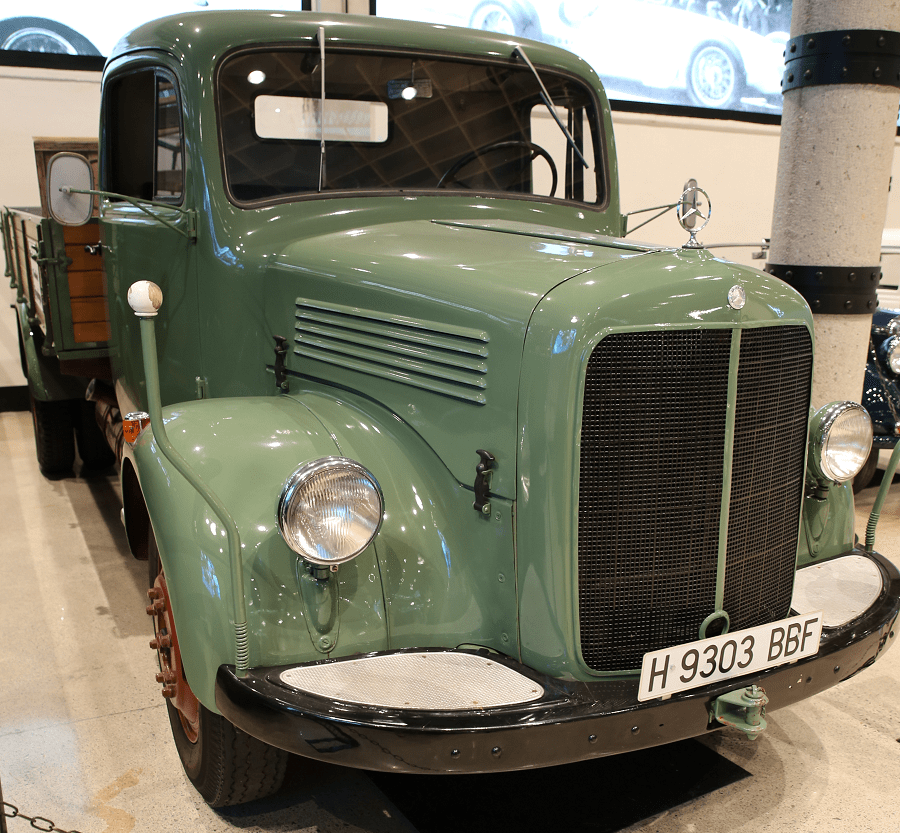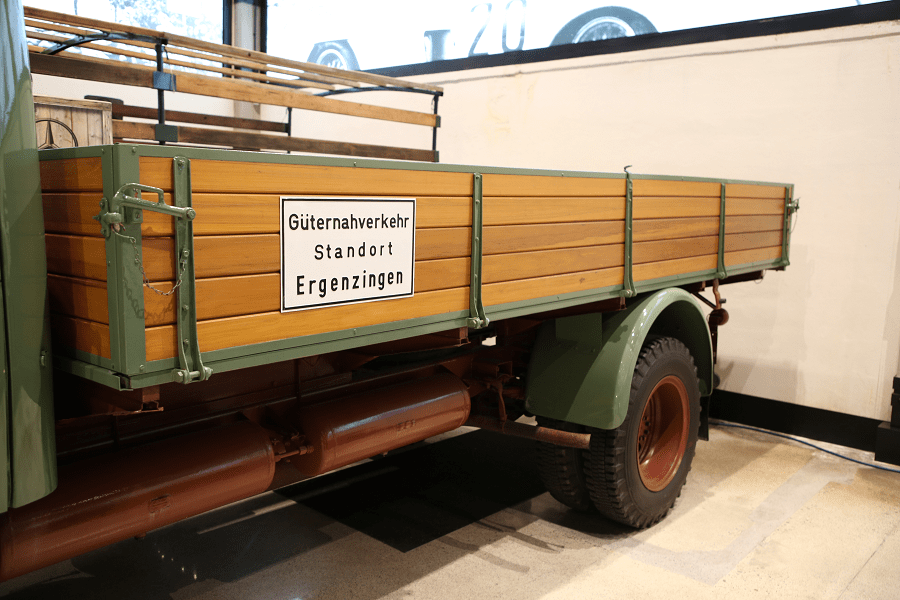The Mercedes-Benz L 312 is a two-axle truck from Mercedes-Benz that was built in Mannheim from 1953. It largely corresponds to type L 311. Because of their engine output of 90 HP (66 kW) at the beginning, both types were known as the “90er Mercedes”. Initially, the vehicle was built as a flatbed truck and a tipper truck and was called the L 4500.
The Mercedes-Benz “Kurzhauber” (short-bonnet) truck is a conventional layout, cab-after-engine truck manufactured from 1959 to present day (2023). In Germany it is most commonly referred to as the Kurzhauber (for “short bonnet”). The engine intruded into the cabin underneath the windshield, all in the name of making a shorter truck to meet the strict period German regulations on overall length. The short-bonnet truck was built in many countries and remains in service throughout many of the regions to which it was exported.
The first short-bonnet truck model, the Mercedes-Benz L 337, was first produced in Germany in 1959. Its technical successors were in production for export until 1995, long after domestic German sales had ended. The short-bonnet truck was a big export success for Mercedes-Benz and became very popular in the Middle East, Asia Pacific, South America, and Africa.
Originally, medium-weight trucks (L 323 and L 327, with 100 PS or 74 kW inline-six diesels) intended for shorter delivery and construction work were built in Daimler-Benz’ Mannheim plant. The heavier trucks, for long-distance and heavy construction work, were built in the Gaggenau plant. These were designated L 337 and L 332 B (L 334 B from 1960), with 12 t (26,500 lb) or 19 t (41,900 lb) total weights and 172–180 PS (127–132 kW) diesel six-cylinders. In 1962 the more powerful 19-tonne L 334 C was added, mainly intended for export. The multiple model designations were letter combinations reflecting the vehicle’s intended use, until a new system (still in use today) was introduced in the summer of 1963 to include overall weight and engine power.
The 5.7 L (5,675 cc) OM 352 was Mercedes-Benz’ first direct-injection diesel engine. After having debuted in 1964, a 130 PS (96 kW) was installed in the Kurzhauber in the 1967 L/LP 1113 B series (“11” for the tonnage, “13” reflecting tens of horsepower). The engine (and other versions thereof) gradually spread through the range, replacing the earlier indirect-injection units.
Just as the Dodge Power Wagon became synonymous with oil exploration throughout Arabia in the 1950s, the short-bonnet trucks, together with the Kenworth 953, became synonymous with the Arabian exploration boom throughout the 1960s.
In Argentina, the short-bonnet trucks were made until 1997, when manufacture ceased in favour of the Sprinter and bus chassis only. The models made in the Virrey del Pino plant were: L 311, L 312, L/LS 1112, LA 1112, L 914, LA/LAS 1114, L/LK/LS 1114, L/LK 1215, L/LK 1218, L/LK 1514, L/LS/LK 1517, L/LS 1521, LA 1419, L/LS/LK 1518, L/LS 1526, L/LK 1615, L 1619, L 1620, L/LS 1622, L/LS 1633. In this country, the most popular line model was the Mercedes-Benz 1114, referred to in Spanish as the “once-catorce” (“eleven-fourteen”), while since 2016 the Atron 1735 has been the only short-bonnet model made in Argentina.












